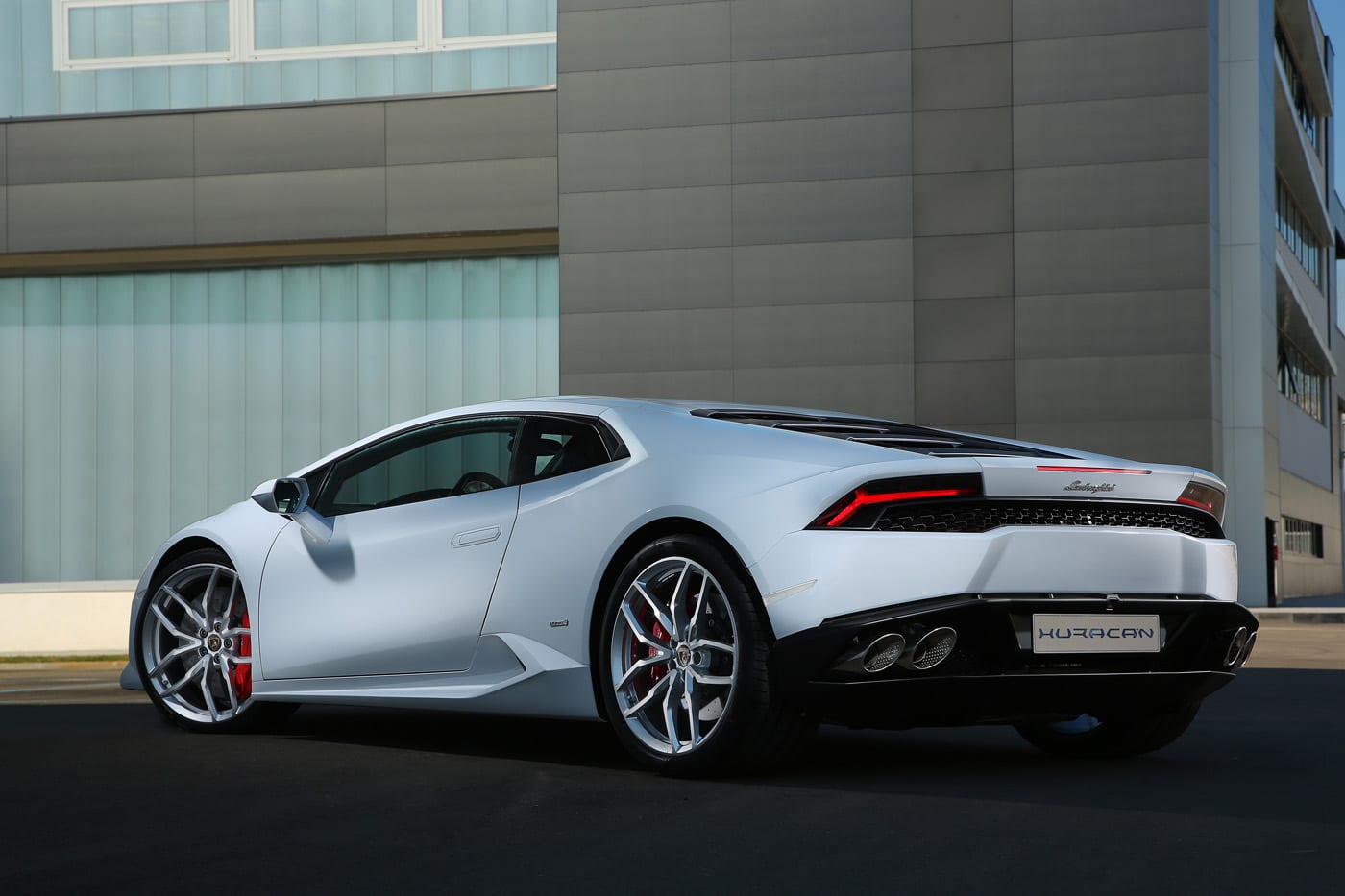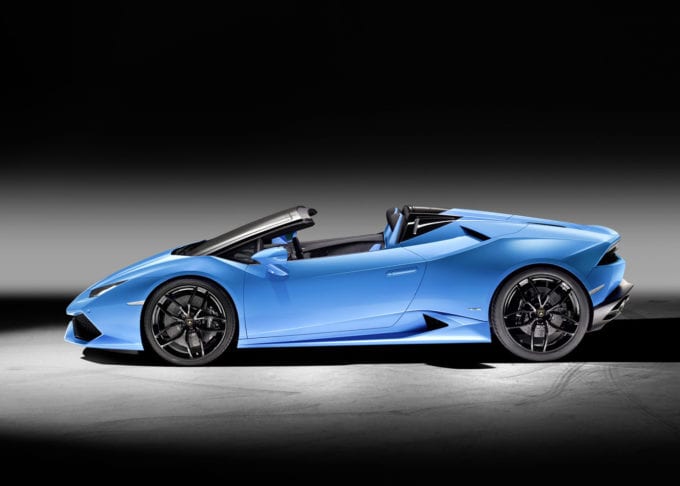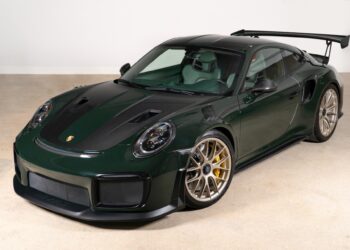Lamborghini Huracan Price
If you’re wondering what the Lamborghini Huracan’s price is set at, you’ve come to the right place. When it was first released, Lamborghini gave the Huracan a base price of around $200,000. This price would obviously go up depending on the options selected when ordered. Now that the base Huracan is out of production you can just find a Lamborghini Huracan for sale on the duPont REGISTRY marketplace.

Lamborghini Huracan Review
If you demand the very best, Lamborghini has delivered a world-class supercar with the Huracan. When talking about a Lamborghini Huracan review, there is just so much to talk about. From the interior to the exterior and everything in between, it’s a phenomenal car. Since it was unveiled at the 2014 Geneva Motor Show, the Lamborghini Huracan has been admired, driven, raced and adored by many.
VIDEO REVIEW: Lamborghini Huracan STO
The Huracan is a harmonious blend of carbon fiber and horsepower endowed with the spirit of a raging bull. The name is a Spanish pronunciation of Hurricane, and it is a potent performance coupe. Nothing compares to the power and fury of such a storm, and a new Lamborghini Huracan is a category 5.

The bold hexagonal lines of the carbon atom were the inspiration for many of the contours. Every form has a function, nothing in the design is arbitrary. The exterior is striking and also inviting. Unlocking the beast, it presents the door handles to you, the doors are your passport to live out your dreams of acceleration and ten-cylinder excitement. The only way to get closer to the excitement would be to drive the Spyder version with the top down.
The body and chassis are state-of-the-art. The spaceframe uses high strength aluminum along with steel and carbon fiber. The Lamborghini Huracan’s horsepower comes from the 5.2 liter V10 that is mounted low to provide great handling and preserve the driver’s line of sight.
The Huracan Coupe has the best NVH numbers on the market. Noise, Vibration & Harshness are measurements of how much irritation the cockpit feels. Since the frame is incredibly stiff, the suspension performs flawlessly. Double wishbones at all corners are commanded by traditional coil overs or an optional Magnetic Ride system.
Lamborghini Huracan Specs
There’s no denying the fact that the Lamborghini Huracan’s specs are impressive as everything that comes from the Italian automaker is always a star in the market. The Lamborghini Huracan top speed is where spec discussion should start, as it can propel to over 202 mph. To get to that kind of speed, acceleration is necessary. Thankfully, the Lamborghini Huracan 0-60 is just 3.2 seconds, making for a quick sprint from a dead-stop.
- Price: Starting ~$200,000
- Engine: 5.2-litre V10
- Transmission: 7-speed dual-clutch
- Horsepower: 602 hp
- Torque: 413 lb-ft
- 0-60 mph: 3.2 seconds
- 1/4 mile: 10.4 seconds @ 135 mph
- Top Speed: >202 mph
Lamborghini Huracan Engine
The Lamborghini Huracan engine is a naturally-aspirated 5.2 liter V10. It is a flat-plane design that revs to 8,250 rpm in order to make 602 horsepower and 414 lb-ft of torque, which is almost up to par with the Huracan Performante. A compression ratio of 12.7 allows it to meet strict emission controls thanks to the clean burn. Lamborghini also boasted during its unveiling that this V10 engine offered injection technology that’s made possible through multi-point injection with IDS (Iniezione Diretta Stratificata) stratified injection. These systems can be utilized by the Lamborghini Huracan’s computer either at the same time or alternatively. Lamborghini chose a forged crankshaft, allows for maximum stiffness and rigidity without having to add unnecessary weight. The crankcase, on the other hand, is made from an aluminum-silicon alloy. Lamborghini went with this alloy because it makes the cylinder barrels very resistant to wear.

Lamborghini Huracan Transmission
Routing the power to the wheels of this Lamborghini is the seven-speed dual-clutch gearbox LDF (Lamborghini Doppia Frizione) Huracan transmission. Power from this transmission is sent to the electronically-controlled all-wheel-drive system. Lamborghini has mounted the LDF transmission behind the V10 engine, a feat possible thanks to its length of less than 60 cm.
Lamborghini Huracan Interior
The Lamborghini Huracan interior is the intersection of beauty and comfort. Customers who demand the very best will find diamond-stitched seats, two-tone leather, and microfiber suede. Controls and information are well placed for easy access. Even the A/C vents received proper attention, a rarity in cars in this class. Displaying the car’s information is the large 12.3-inch TFT instrument panel that can be controlled via buttons on the flat-bottomed, three-spoke steering wheel.

The TFT screen behind the steering wheel is truly magnificent and allows the driver to see exactly what they need to see. The driver can switch between three different display screens depending on the mode selected. For example, when in full drive mode, the central rev counter is large and flanked by two readouts for the fuel level and water temperature. When in Mixed mode, the rev counter is downsized a bit and a window on the right pops up that displays functions like navigation. Finally, there’s Full Navi and Infotainment mode where the map takes over a majority of the screen. Now, it’s time to talk about the rest of the interior.
Lamborghini chose to make the cabin of the Huracan predominately Nero Ade black. This includes the center console, center panels on the seats, dashboard and door panels. Customers can, however, choose from different interior color variants to complement the shade of black. The Elegante two-tone interior is another interior options that gives customers the chance between nine contrasting colors and more leather options, while the two-tone Sportivo interior has Alcantara in six contrasting colors.
Lamborghini Huracan Brakes
With so much power, the Lamborghini Huracan brakes have to be ready to stop on a dime no matter the rate of speed. For that, Lamborghini went with carbon-ceramic brakes. The monoblock calipers are made of aluminum with six pistons in the front and four pistons in the rear. The carbon-ceramic discs are both ventilated and cross-drilled, measuring in at 380 mm in diameter and 38 mm thick in the front, and 356 mm in diameter and 32 mm thick in the rear. Lamborghini notes that the discs used are virtually fade-free and boast a long lifetime without diminishing performance.

Lamborghini Huracan Standout Features
Your only option is rear or all-wheel drive. The latter makes use of a Haldex center differential to send power instantly where its needed. If lap times are not your goal, RWD makes for better mileage and less weight.
Electric power steering is standard equipment, but the optional Lamborghini Dynamic Steering offers the ability to change ratios in an instant.
All lights used in the Huracan, including the headlights, use LED technology.
The seats have electric backrest adjustment.
Exterior mirrors come with an electric fold-in function.
Options include, but are not limited to: optical parking assistant for front and rear, fully-electrically adjustable heated seats with an armrest, navigation system with 3D graphics, transparent engine cover, and Mimas design wheels.
The Huracan is the successor to the Gallardo, which had 14,022 examples built from 2003 to 2013.






